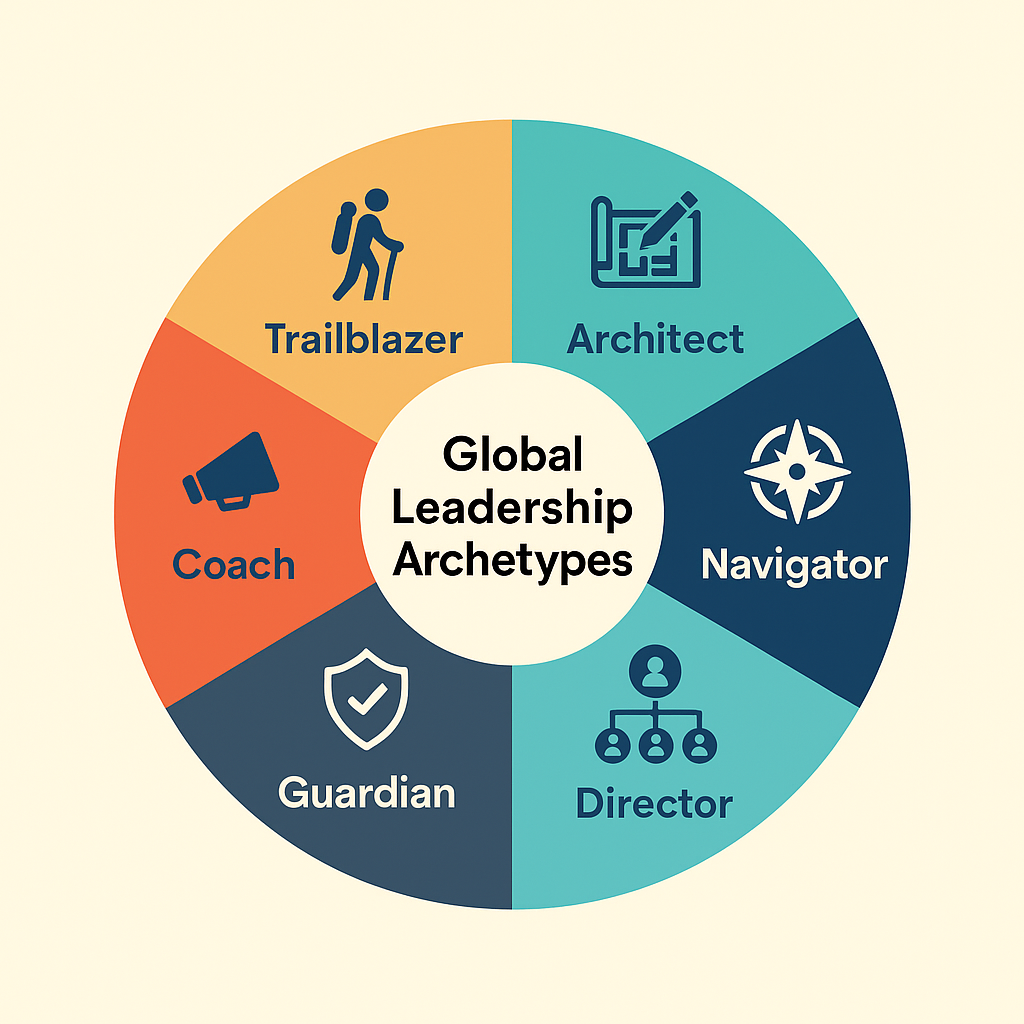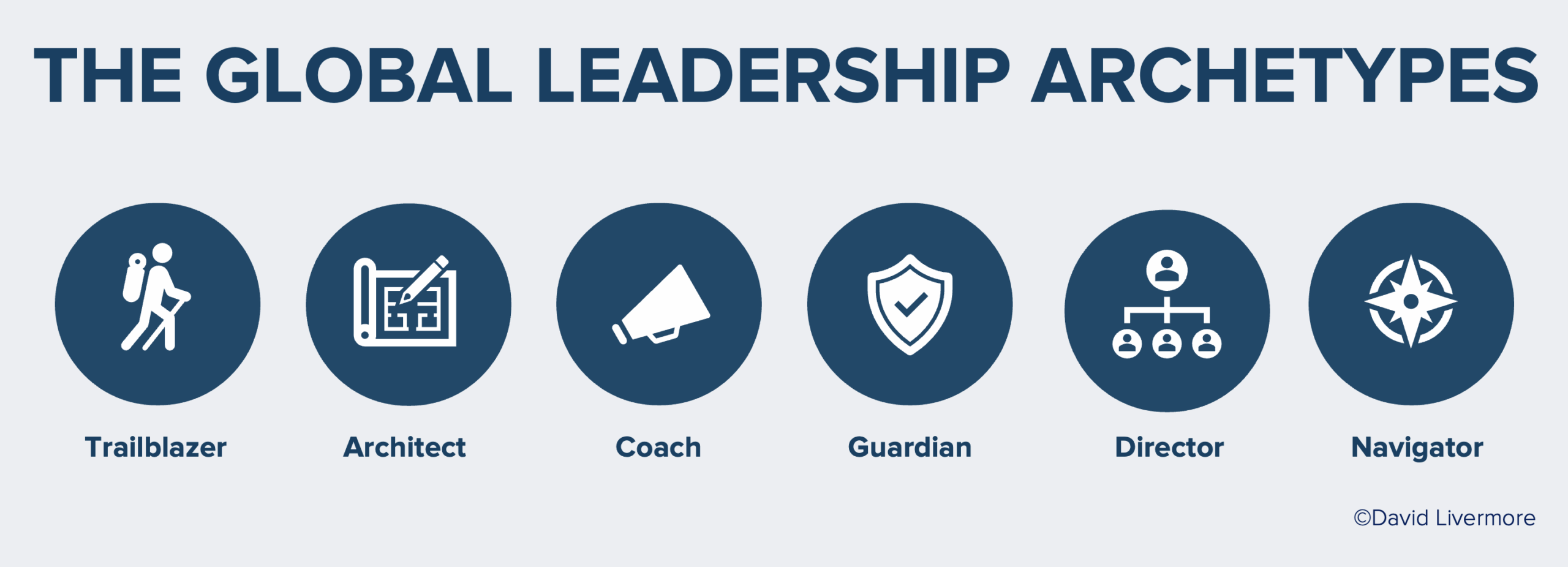
Cultural intelligence, or CQ, is the new currency of leadership. It’s a stronger predicter of leadership success in diverse, complex environments than IQ, EQ or lived experience. But what is cultural intelligence and how does it help you lead effectively?
Cultural intelligence is defined as the capability to effectively lead people with different cultural backgrounds, including different national, ethnic, organizational, generational, and many other backgrounds. More simply, it’s the ability to lead anyone, anywhere. It’s rooted in rigorous, academic research conducted by scholars around the world and it includes four capabilities, each of which can be measured and improved:

Figure 1: Four CQ Capabilities
CQ Drive (Motivation): Interest, Confidence, and Perseverance
CQ Drive goes beyond the adrenaline rush of being in a new place. It’s the degree to which we can retain our motivation, focus, and persistence to address the increased complexities and challenges that come from working in diverse environments. In the early years of doing this work, I glossed over CQ Drive because it seemed insultingly obvious to tell leaders that they need to be interested in other cultures in order to be effective working with them. But the longer I’ve worked with executives and organizations around the world, the more I see how fundamental motivation is to culturally intelligent leadership. CQ Drive is the degree to which we’re open to and interested in learning from different perspectives rather than avoiding them. It’s what gives us the perseverance to link DEI and global effectiveness with organizational mission and strategy. And it’s whether we can motivate our teams to persevere through the challenges of working across different time zones, working styles, communication norms, and approaches to conflict.
Leaders with high CQ Drive are energized by working with people who have different cultural backgrounds. They have a high level of confidence for dealing with the inevitable challenges associated with work in digital, diverse contexts and they can effectively motivate others to leverage the diversity on their teams.
CQ Drive includes three sub-dimensions that can be assessed and developed:
- Intrinsic interest—the degree to which we derive enjoyment from culturally diverse situations
- Extrinsic interest—the tangible benefits gained from working effectively in diverse settings
- Self-efficacy—the confidence that we will be effective in an intercultural situation.[1]
Consider: What sub-dimension is most relevant for you right now?
CQ Knowledge (Cognition): Understanding Norms and Differences
CQ Knowledge is our understanding of culture and its impact on how people think and behave. This is the component that is most often emphasized in cross-cultural management courses and inclusive leadership programs (e.g., here is what you need to know about Germans, Millennials, African Americans, etc.). It’s impossible to lead with cultural intelligence if we don’t have a grasp of fundamental differences in how people’s identities and backgrounds influence how they think and behave. CQ Knowledge helps with that. It also includes our understanding of geo-politics and its impact on how to do business locally and globally. It’s our knowledge about the historical impact of colonialism, racism, and other forms of oppression on how people perceive us and our organizations. And it’s the degree to which we understand the cultural values of the stakeholders we interact with.
Leaders with high CQ Knowledge understand how culture influences someone’s thinking and behavior. They have a broad understanding of communication styles, religious beliefs, and leadership norms held by major cultural groups without resorting to stereotyping. They can figure out when something is “cultural” and when something is more a reflection of one’s personality. And they understand how events happening on the other side of the world may impact the work they’re leading, whether it’s political unrest, a labor dispute, or disruptive weather.
CQ Knowledge includes two sub-dimensions that can be assessed and learned:
- Cultural general knowledge—a macro understanding of cultural systems, norms, and values associated with different social groups
- Context-specific knowledge—a depth of understanding about how culture impacts a specific domain, such as management, education, or health care.
Consider: What specific cultures do you need to understand most right now?
CQ Strategy (Metacognition): Awareness and Planning
CQ Strategy is our ability to draw upon our motivation and understanding to make sense of things as we lead in diverse contexts. This capability provides us with a more sophisticated approach to leading in complex, diverse situations to ensure we don’t presume that multiple visits to Asia makes us an expert on Asian business. It’s also the capability that prevents us from assuming that all women employees or all Black managers want the same thing. Many executives tell me proudly that they trust their gut more than they trust market research or employee surveys to guide their decision-making. There’s actually some interesting research that suggests that the gut, or more literally, our subconscious thinking, can indeed be a reliable tool for navigating complex situations, particularly if we have extensive experience; but the gut’s reliability changes when the cultural context shifts. The more different the backgrounds and identities of the people we’re leading, the less confident we should be relying on our gut.
Leaders with high CQ Strategy spend time anticipating how culture may affect any situation involving people from diverse backgrounds. Instead of jumping into a brainstorming session with a diverse group and asking everyone to share their ideas, leaders with high CQ Strategy provide advance warning to the group and structure the session to facilitate hearing from those individuals who are more reticent to voice their opinions. A white male leader who applies CQ Strategy is better prepared to provide constructive feedback to a Black employee in a way that is respectful, constructive, and clear. He considers how racial differences may affect the conversation and he addresses potential issues of inequity facing the employee at the organization. CQ Strategy is important for anyone who wants to be more culturally intelligent but it’s especially critical for leaders.
CQ Strategy includes three sub-dimensions that can be assessed and developed:
- Planning—anticipating how to approach the people, topic, and situation in a culturally diverse context
- Awareness—being in tune with what’s going on in ourselves and others during an intercultural encounter.
- Checking—comparing an actual experience with what we expected to happen.
Consider: What situation or project with a diversity of stakeholders involved would benefit from additional planning by you?
CQ Action (Behavioral): Flexibility
CQ Action is our ability to act appropriately in a range of culturally diverse situations. The other day I was crossing the street and an oncoming car slowed down for me. I gave the driver a half wave to thank them but they interpreted it as me telling them to slow down. They opened the window and yelled, “Get the hell out of the road asshole.” My intention was to express gratitude. But my behavior was interpreted differently. CQ Action gives us a repertoire of behaviors to choose from so that we can accurately express our intent. Different behaviors mean different things to different people. If we’re asked to make a couple introductory remarks at a town hall meeting, some will prefer that we keep our comments brief and succinct while others will expect a more elaborate presentation that includes a personal story. With CQ Action, we gain the skill to use the behaviors that will best communicate our core values and intent, whatever the context.
Leaders with high CQ Action have the skill to adapt, know when not to adapt, or create a new culture altogether. Their goals aren’t thwarted when the context changes but instead, they use different actions to accomplish the same objective. They aren’t trying to be all things to all people. They’re comfortable in their own skin but they can move in and out of many different leadership situations and change how they lead based on the individuals and circumstances involved.
CQ Action includes three sub-dimensions that can be assessed and developed:
- Speech acts—the specific words and phrases used when communicating
- Verbal adaptability—adjusting things like volume and rate of speech
- Nonverbal behaviors—adapting actions like where to sit in a meeting, how to greet people, how to use eye contact, etc.
Consider: What is one behavior you need to adapt more when interacting with people on your team who are different from you?
Conclusion
Some leaders have high CQ and others don’t, but almost everyone can become more culturally intelligent and that’s good news for all of us. The strength of cultural intelligence lies in developing and applying all four capabilities rather than just one or two. By assessing CQ in ourselves and others, we have insight on how to improve our leadership effectiveness to ensure we lead all people well.
**This brief is an excerpt from the 3rd edition of LEADING WITH CULTURAL INTELLIGENCE and is part of the CQ Leader’s Toolkit
**Read the Briefs on TEAM CQ and ORG CQ
[1] Linn Van Dyne, S. Ang, K.Y. Ng, T. Rockstuhl, M.L. Tan, & C. Koh, Sub-dimensions of the four factor model of cultural intelligence: Expanding the conceptualization and measurement of cultural intelligence. Social and Personality Psychology Compass, 2012, 6, 295-313.



